My good friend Keith and I just returned from a 9 day trip
to
Florida. The primary focus of the trip was to go to the
National
Museum of Naval Aviation in Pensacola to see the AJ Savage aircraft on
which Keith spent many hours during the Korean conflict. This
particular aircraft is the only remaining AJ in the world.
Also
joining us in Pensacola were our good friends Fred and Judy, who now
live in North Ft. Myers, FL. Keith, Fred, and I owned a
Cessna
172 aircraft together in the ‘70s.
Keith came over to my house a day early so we could make a stressless start to our trip. We caught the 7:30 shuttle to Phoenix and settled back for our 2 plus hour ride to the airport. Arriving at the airport, we passed the Southwest Airlines counters and saw a triple depth line of people stretching the full length of their several counters and hoped we would have enough time if we found similar lines when we reached the American Airlines counter. We were pleasantly surprised to find a number of kiosks at the AA counter with an attendant at each. We walked up to one and a young lady took our boarding passes, scanned them, took our baggage fees (GRRRRR!) and called an attendant to take our baggage. In a couple of minutes we were all checked in, We hadn't realized it, but our boarding passes were for "Pre-check". This made the TSA check really simple. No undressing, no groping.
We had an uneventful flight, changing planes in Dallas-Ft. Worth. We were in contact with Fred and Judy who were driving to Pensacola as we were flying. As we got off the escalator to pick up our baggage, there they were! In addition to their 10 hour drive that day to Pensacola, they had driven for about an hour through Pensacola peak traffic to get from the hotel to the airport to pick us up. That's true friendship!
Keith came over to my house a day early so we could make a stressless start to our trip. We caught the 7:30 shuttle to Phoenix and settled back for our 2 plus hour ride to the airport. Arriving at the airport, we passed the Southwest Airlines counters and saw a triple depth line of people stretching the full length of their several counters and hoped we would have enough time if we found similar lines when we reached the American Airlines counter. We were pleasantly surprised to find a number of kiosks at the AA counter with an attendant at each. We walked up to one and a young lady took our boarding passes, scanned them, took our baggage fees (GRRRRR!) and called an attendant to take our baggage. In a couple of minutes we were all checked in, We hadn't realized it, but our boarding passes were for "Pre-check". This made the TSA check really simple. No undressing, no groping.
We had an uneventful flight, changing planes in Dallas-Ft. Worth. We were in contact with Fred and Judy who were driving to Pensacola as we were flying. As we got off the escalator to pick up our baggage, there they were! In addition to their 10 hour drive that day to Pensacola, they had driven for about an hour through Pensacola peak traffic to get from the hotel to the airport to pick us up. That's true friendship!
After a good night’s sleep we all went to the museum early
in the morning. As we checked in and showed our ID’s, we
asked the lady about the procedure for getting the tram ride of the
outdoor flight line exhibits, where the AJ is located. She
said “Oh, the tram is not running today!” Of course we were
in shock, especially after confirming the tram schedule prior to
leaving home. She suggested we talk to the men in the
information booth to see if anything could be done. After
being handed off to a couple of other people, one gentleman suggested
we have a seat and he would be back in a few minutes. About
10 minutes later he motioned us over and took us to a golf cart which
he used to drive us to the flight line. He took us to the AJ,
parked and told us to take all the time we wanted. This was
better than we could possibly have wished for! After a few
minutes he said “I wonder if the door is unlocked” and opened the door
to allow us to get an excellent view of the interior. That 20
or so minutes was absolutely the highlight of our trip!
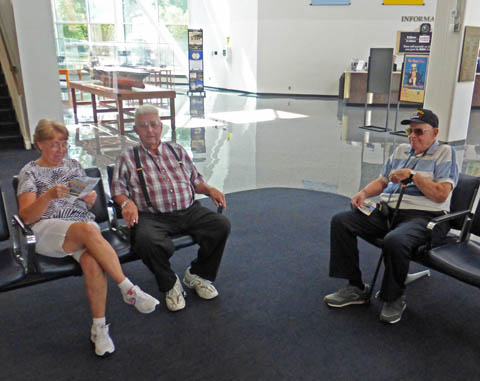
Judy, Fred, Keith and I (I'm behind the camera) wait for news on our flight line tour.
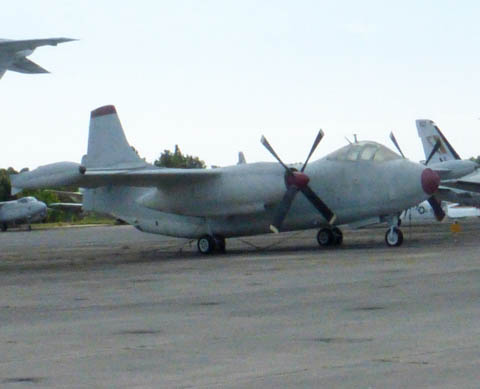
Our first sight of the AJ-2 Savage aircraft. The only remaining one in the world!
The AJ was the only airplane which could operate from a
carrier
and carry the atomic weapon of the day, named "FatBoy, weighing in at
8000 lbs. It was an unusual plane in that it was powered by
two
large reciprocating engines on the wings plus a jet engine in the tail.

Keith proudly poses with the beloved (and hated) AJ. He has reminisced a lot about it over the years
as he had spent much of his time in the Navy on and around this plane. He hated it for the many
buddies he lost due to its problems.
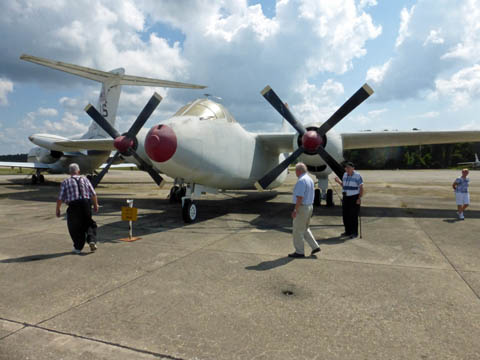
We all wandered around the aircraft at our leisure.
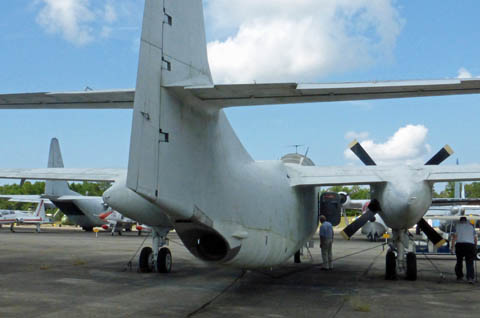
Our guide has discovered the door is unlocked and has opened it for us.
This view shows the jet engine in the tail.
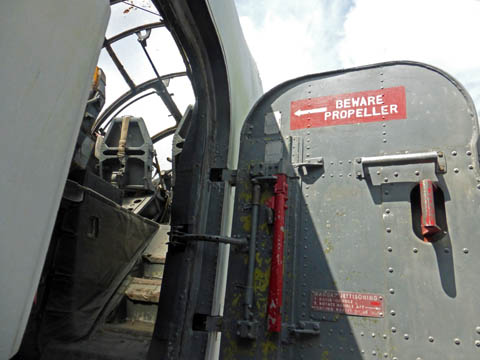
The open door gave us a wonderful view of the interior.
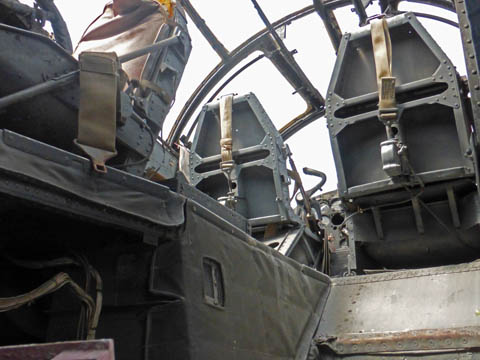
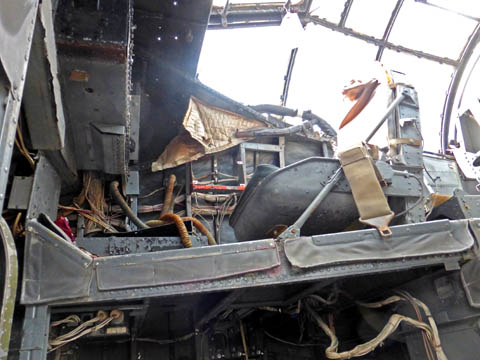
Looking up at the flight deck the pilot's seat is on the left, the bombardier's (Keith) is on the right. To the rear is a backward facing
seat that was originally (on the AJ-1) used to remotely operate a tail mounted machine gun. They eliminated the gun on the AJ-2
of which there were many more made. This seat was then used mostly for training.
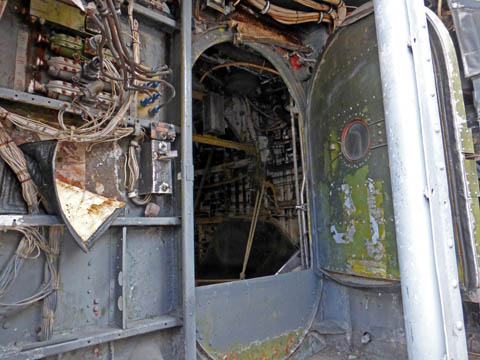
A look through the open bomb bay door. Of course in flight this door was closed. When instructing new bombardiers,
Keith was responsible for looking through the porthole window in the door, down through the open bomb bay doors to
monitor the accuracy of the bomb drops.
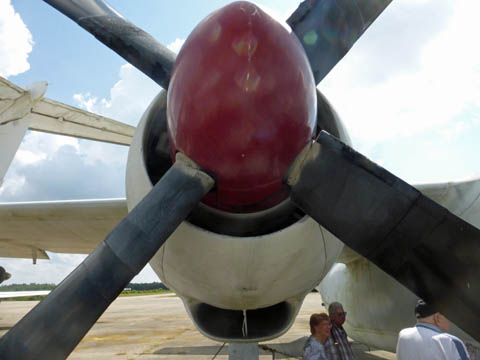
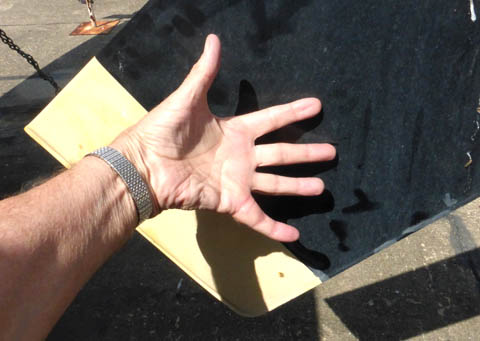
The engines and propellers on this plane are huge! I have my hand on the blade to show its width.
We spent pretty much all day at the museum. Keith
was in his glory amongst all the aircraft he was familiar with and on
which he had flown and worked while in the Navy. We all had a
wonderful, if not tiring time.
Shown below are a sampling of the many pictures taken in the museum.

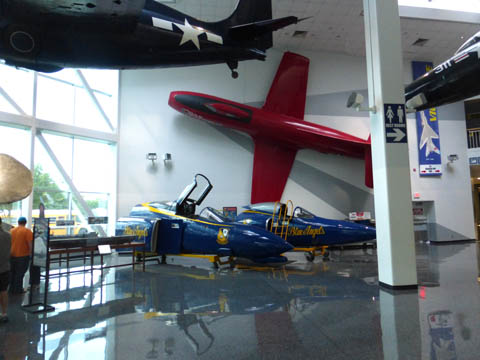
Admittance to the museum is free, but you need to show ID upon entering each building. The lobby contains many displays including
a couple of simulated Blue Angel cockpits visitors can sit in. On the wall is the Douglas D-558-1 Skystreak built to explore transonic
and supersonic flight. In Aug 1947 it set a speed record of 641 mph.
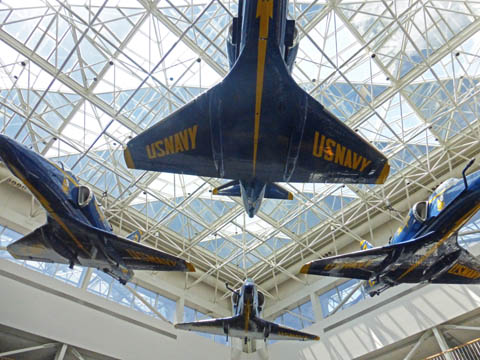
There was a spectacular display of Blue Angels A-4 Skyhawks in the atrium.

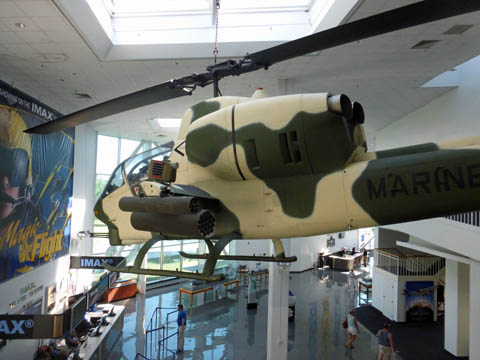
The A-1 Triad (left) was the Navy's first aircraft in 1911, and one of the first floatplanes.
On the right is the AH-1 Seacobra attack helicopter.
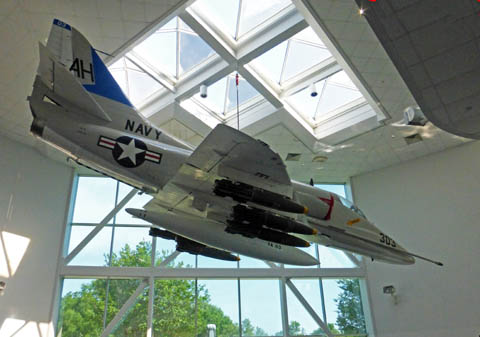
The A4 Skyhawk was a mainstay in the Navy from 1956 to 1987 and continued
as a trainer long after that.
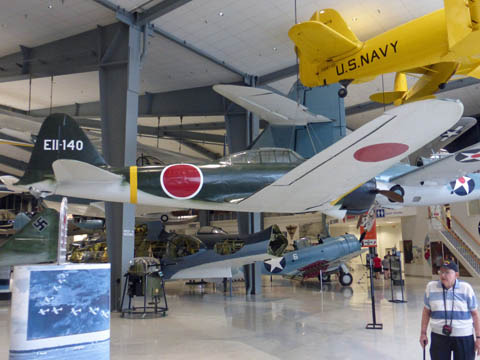
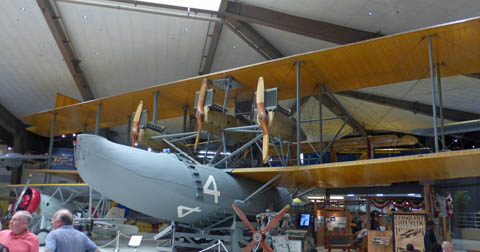
On the left is a Japanese A6M2 Zero reconstructed from parts of many wrecked ones.
On the right is a Curtiss NC-4 four engine seaplane. There are 3 engines facing forward, and 1 pusher engine facing backwards. In 1919
it was the first plane to make a transatlantic flight. It took 19 days with numerous stops for repairs, fuel, and crew rest to fly from
New York to Lisbon, Portugal.
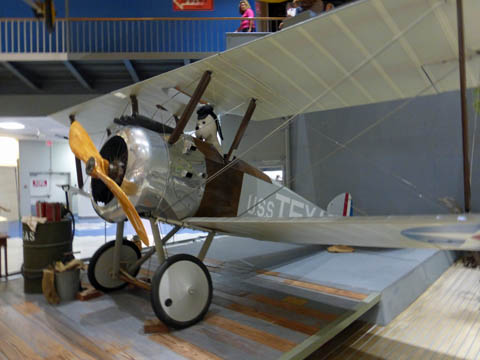
Snoopy is flying his Sopwith Camel. This was the most successful Allied
fighter during WW1.
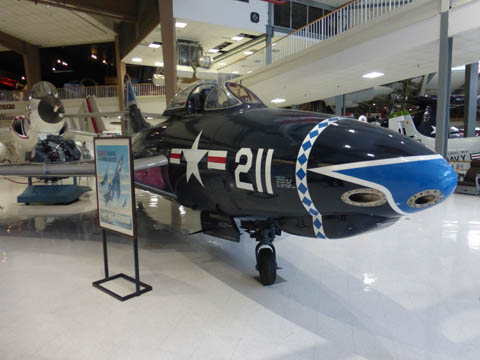
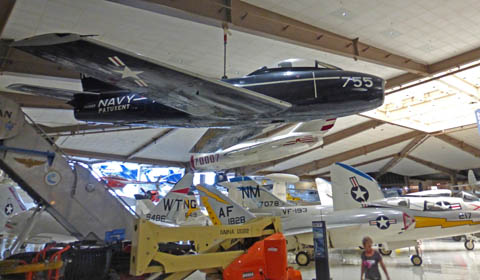
Grumman F9F-6 Cougar North American FJ-2 Fury
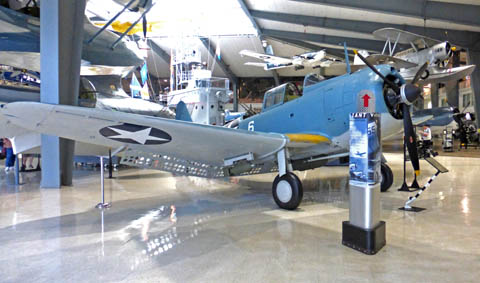
Douglas SBD Dauntless: the last dive bomber built for the USN.
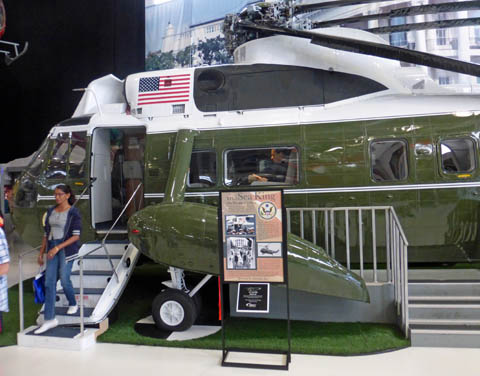
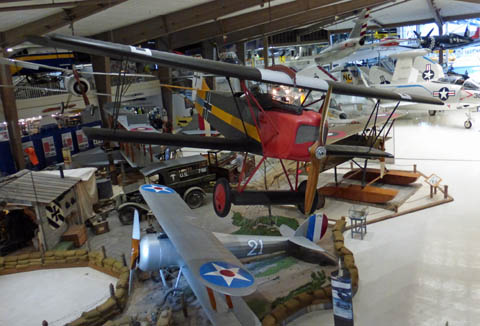
On the left is a Sikorsky H3, modified to a VH-3 for presidential service. It was "Marine One" while the president was aboard.
On the right is a German Fokker D.VII. This example is a replica, made with some original parts, and was flyable when
received by the museum.
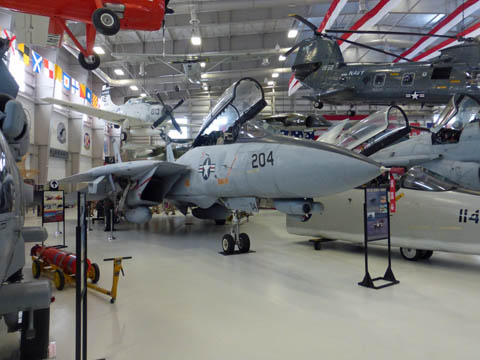
The F-14 Tomcat made its first flight in 1970 and continued serving until 2006. It was the
featured aircraft in the movie "Top Gun".
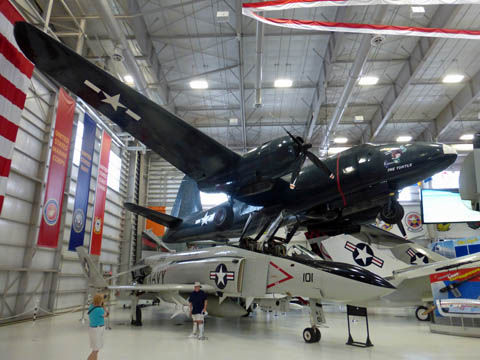
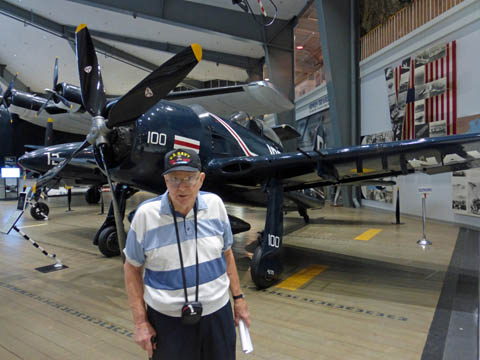
On the left is a Lockheed P2V Neptune. This plane named the "Truculent Turtle", held the distance record without refueling
for reciprocating engine aircraft for 40 years at 11,235 miles.
On the right is the Gruman F8F Bearcat, chosen in 1946 by the Blue Angels as one of their first aircraft.
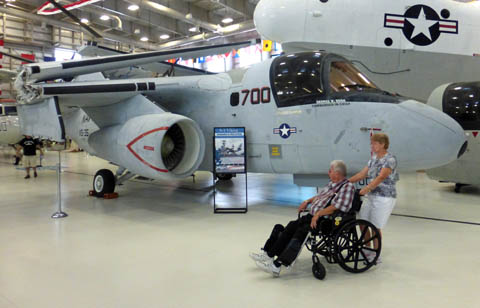
This is the S-3B Viking. This particular plane was "Navy One" during the time
it transported George W. Bush in 2003 to the aircraft carrier Abraham Lincoln.
Fred borrowed the wheelchair to reduce the amount of walking required.
He also pushed it, using it as a walker. We all sat in it at one time or another.
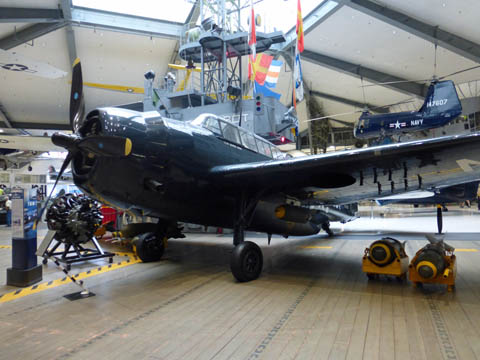
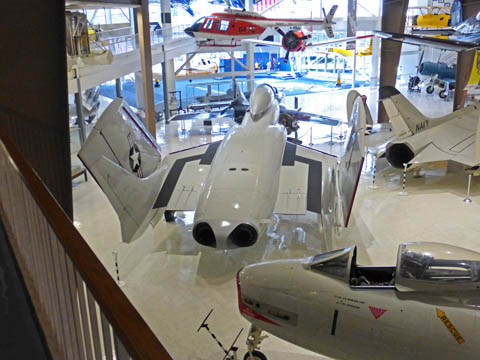
Grumman TBM Avenger -famous WW2 torpedo bomber Douglas F4D Skyray delta wing with wings folded.
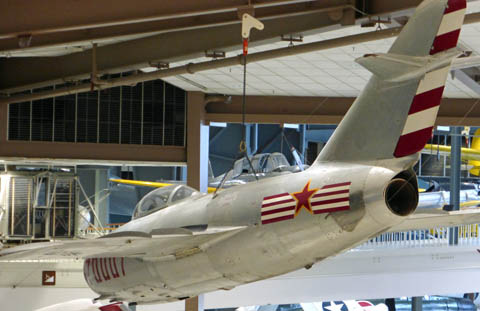
The Soviet MIG-15 was a potent foe for US planes.
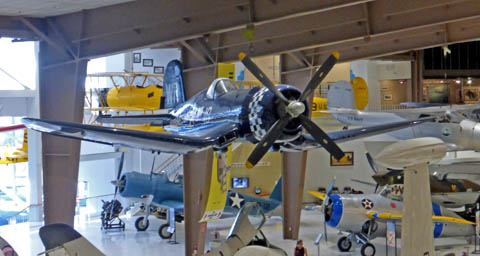
Chance Vought F4U Corsair - the best carrier based fighter in the Pacific during WW2. Its kill ratio was
11:1. The inverted gull wing was designed specifically to keep the prop from touching the deck during carrier landings.
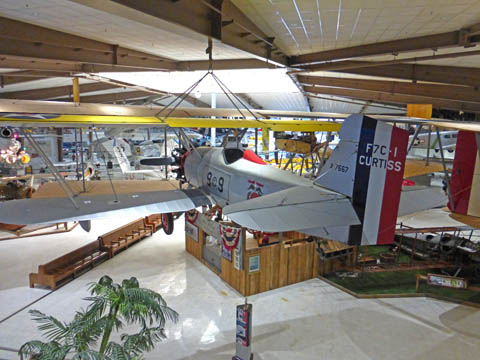
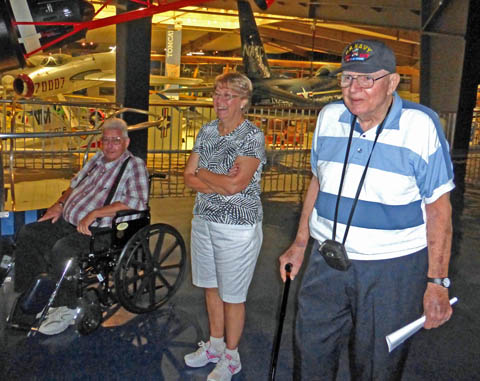
F7C Seahawk. First flew in 1927 Fred, Judy, and Keith enjoy a humorous aviation video.
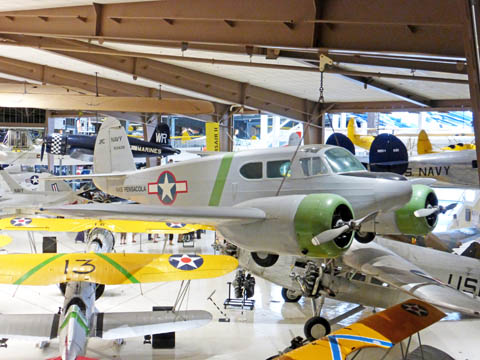
JRC-1 known as the "Bamboo Bomber" was mostly used to transport
ferry pilots to and from their home bases during WW2.
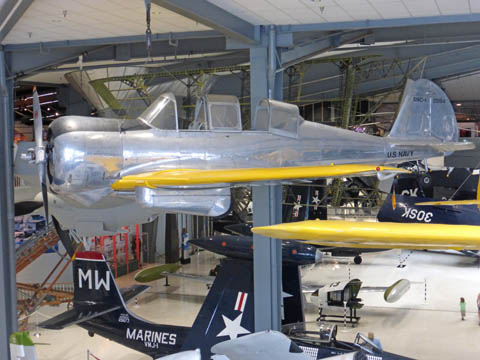
SNC Falcon. This was used in WW2 mostly as a trainer.
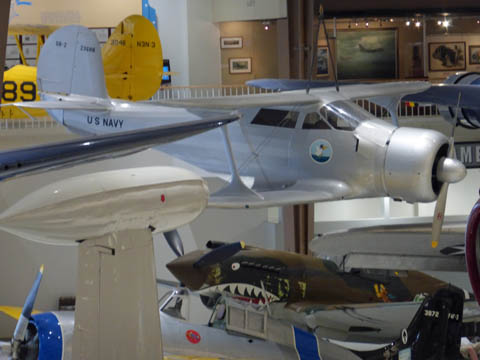
One of my favorite planes: a Staggerwing Beach. When it was purchased by
the Navy, it was designated the JB-1. They were used for executive transport
and for transporting ferry pilots around the country to deliver new planes
to the fleet.
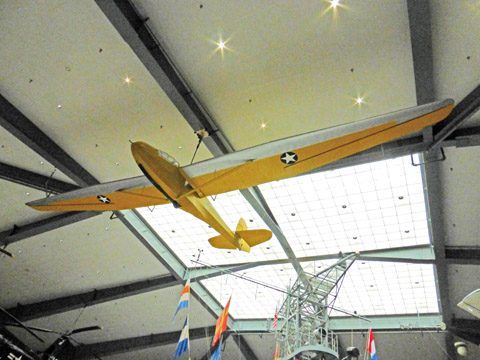
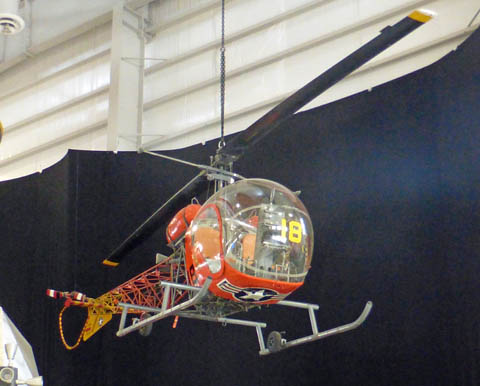
These 2 aircraft hold special significance for Keith. On the left is a Sweitzer TG-1, the military version of the glider
he first learned to fly. On the right is a Bell helicopter similar to the one he flew to get his helicopter rating.

And this holds special significance for me: a Link Trainer similar to the one Gene
and I taught with in th '60s. (Ours didn't have the wings!)
After another good night’s sleep, the four of us got into
Fred and Judy’s Honda and made the over 500 mile drive down to N. Ft.
Myers. The 10 hour drive (11 if you count the time change)
was very tiring, and we took turns driving. They moved to
this house just a few weeks ago from one in Cape Coral, about 6 or 7
miles away. Having bought the house and all the furnishings,
they now have double of just about everything and are in the starting
phases of thinning out. It is a beautiful house in a gated
community. I think they will be very happy there!
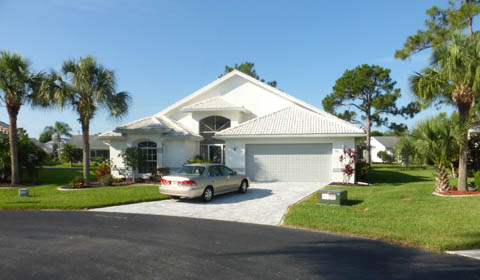

Fred and Judy's house in North Ft. Myers, FL is on the end of a cul de sac, and is beautiful! The landscaping is lush and green. The picture
on the right shows the view from their driveway and the beauty of their neighborhood.
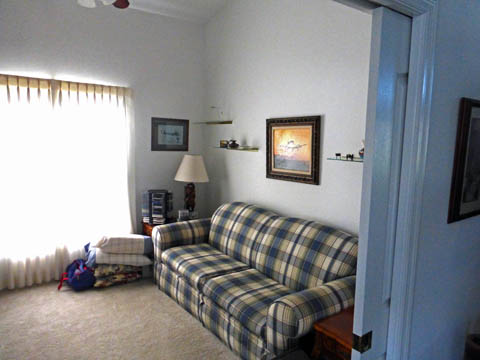
I slept on this hide-a-bed couch in their den. Keith slept on a bed in
the spare bedroom.
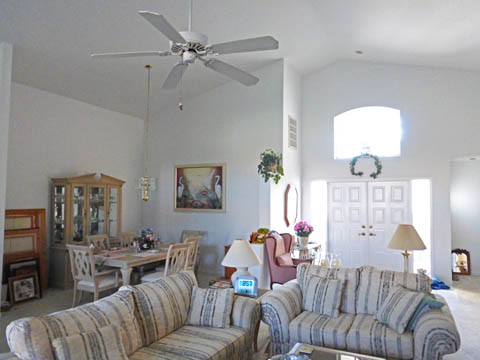
Their house is bright and cheery, and has high cathedral ceilings throughout.
The outside entryway is screened in.
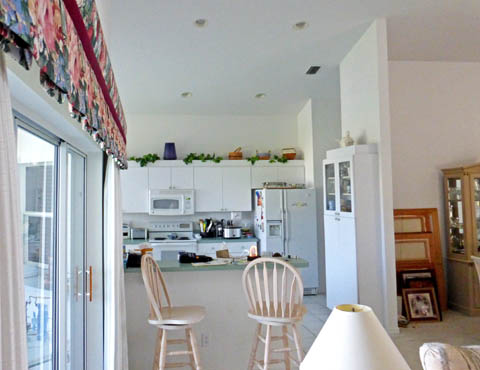
Looking from the living room into the kitchen. There is a lanai to the left.
We had talked about borrowing a car from Fred and Judy and
driving to Cape Canaveral for a day, but after considering a number of
factors, decided against that. As a result we spent a little
longer as house guests than originally planned. It was really wonderful
for us, and I hope not too tiring for them. I now have a new
project: lose the 6 pounds I gained on this trip!
While we were at their home, we were driven around the local
area and had a great tour of Cape Coral and their previous
house. We went to a Shell shop which was really
amazing. It was huge and had a lot of the typical tourist
stuff, but then we entered an area filled with taxidermy animals of all
types, then a “pirate’s nook” including an animated pirate in a cell
who gave various diatribes depending on which button you pushed.
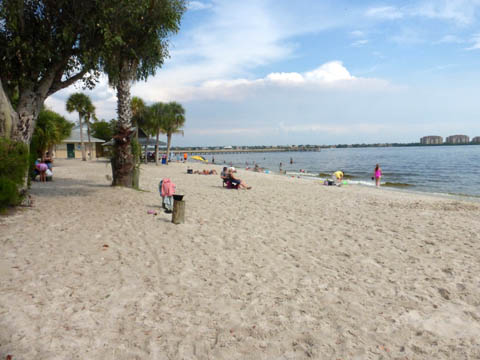
On one of our drives, they took us to the Cape Coral beach.

The Shell shop was interesting. Along with the typical tourist trinkets, they
featured taxidermy animals and pirate gear.

The pirate in jail is animated and talks to you when you press one of the
red buttons on the barrel.
On our last full day, they took us to the winter retreat of
Thomas
Edison and Henry Ford in Ft. Myers. The museum contained
many,
many of the two men’s inventions and products and was right across the
street from their winter homes. The highlight of the museum
was
Edison’s winter lab. This lab was essentially a biological
lab
aimed at developing a domestic source of natural rubber.
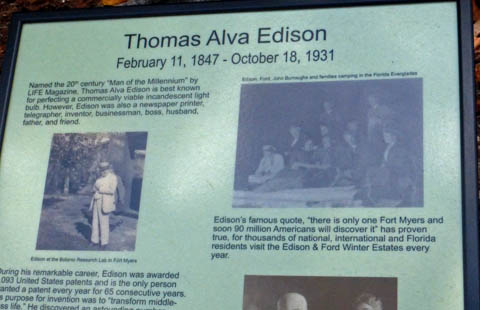

As we entered the museum, there was a brief biography of Edison. On the right Keith and I hava a chat with
the great man. He seemed quite interested in some of my ideas.

There was a beautiful Model T Ford in the lobby, along with several other Ford
items. There was another Model T outfitted for Edison and Ford's annual camping
trips and many accessories to make their trips more comfortable, but apparently some
artist painted murals on the walls and would not allow their work to be photographed!
So no pictures in that whole room!


Edison's early work was heavily involved with the telegraph system. He had many inventions for various accessories.
On the right one of his very early phonograph machines used tinfoil for the recording medium.
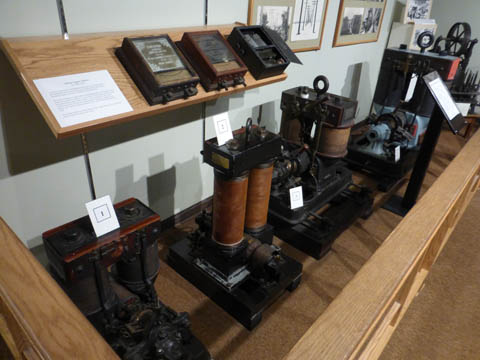
Here are a number of his early dynamos, now called generators.
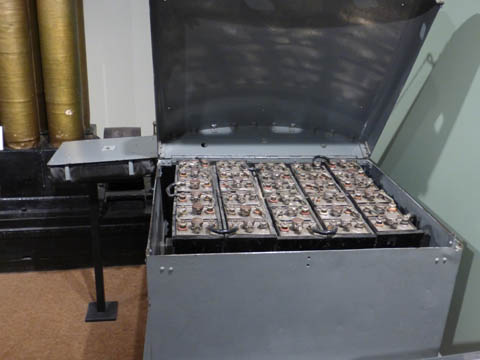
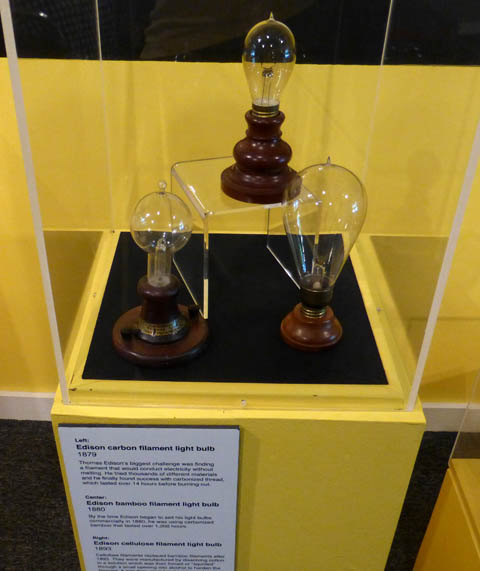
Edison developed a number of different storage batteries. On the left is a bank used in an industrial tractor.
The right shows some of his early light bulbs.
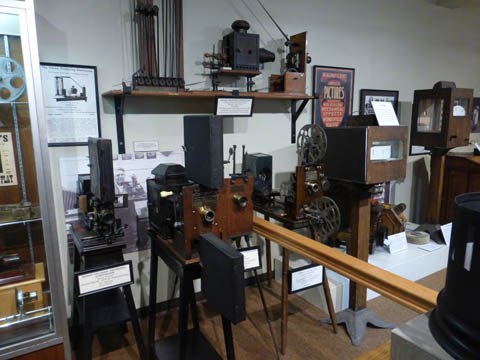
Here is a display of some of his movie equipment.
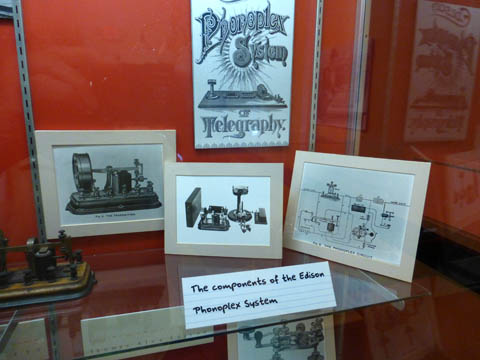
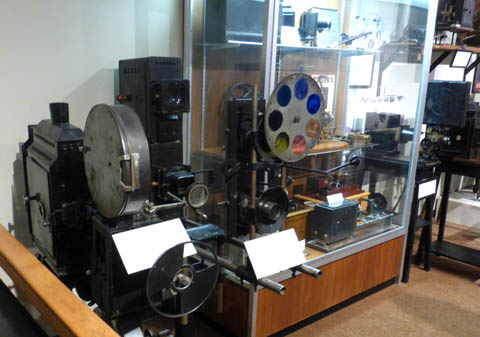
The left shows one of his telegraph systems, and the right more movie equipment.
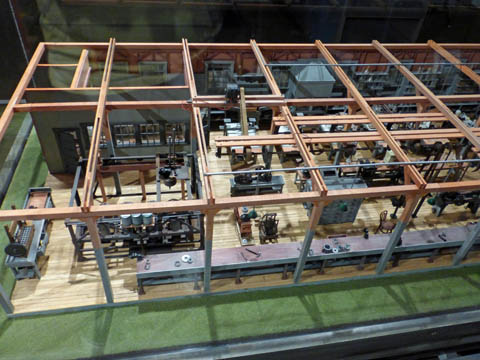
The museum included a very detailed scale model of his lab.
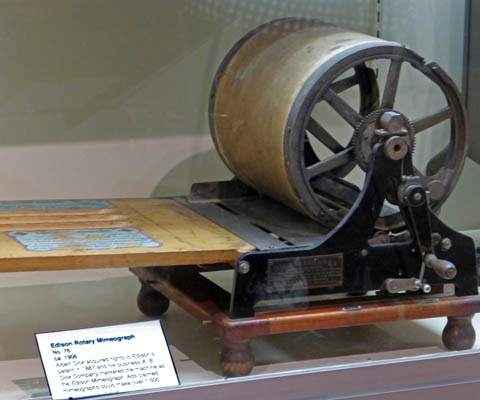
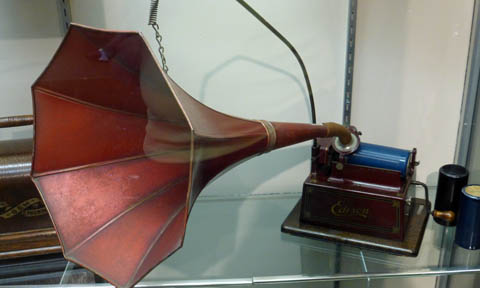
Examples of an early Edison mimeograph machine and one of his phonographs using a wax cylinder.
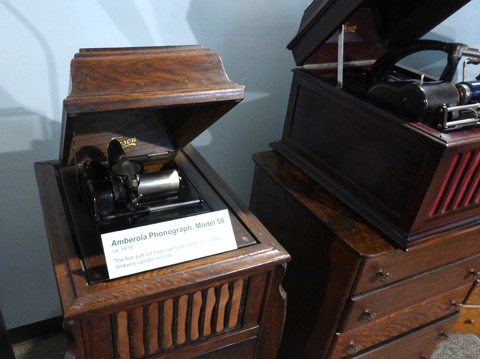
He produced home models of his phonographs in fine cabinets.
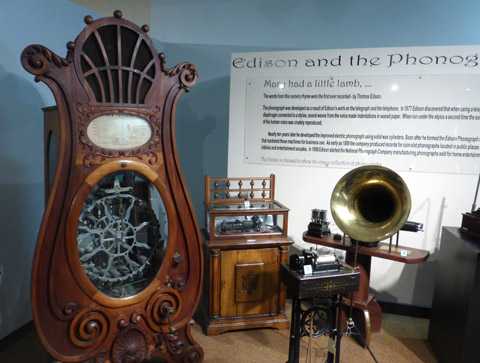
He even produced an early form of the jukebox. It contained 24 two
minute cylinders mounted on a large wheel.
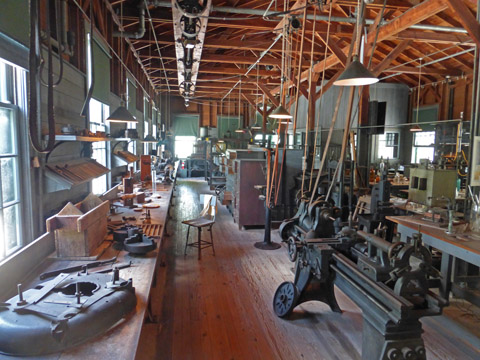
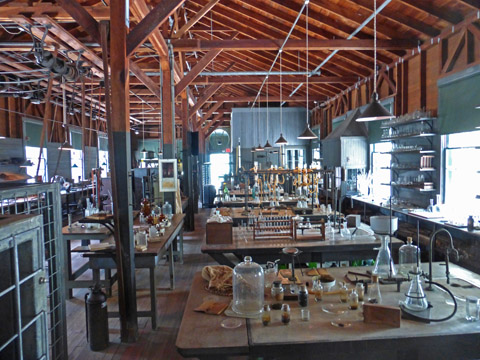
His laboratory was very interesting and contained many machine tools, chemical work benches, a darkroom, and
many specialized tools.
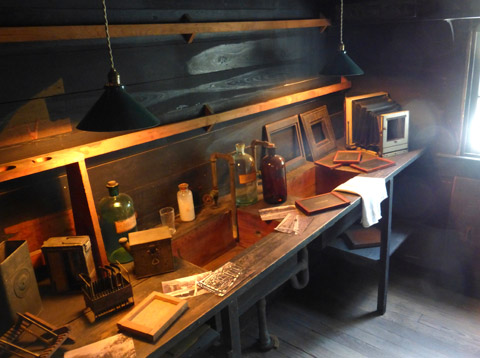
A chemical work bench.
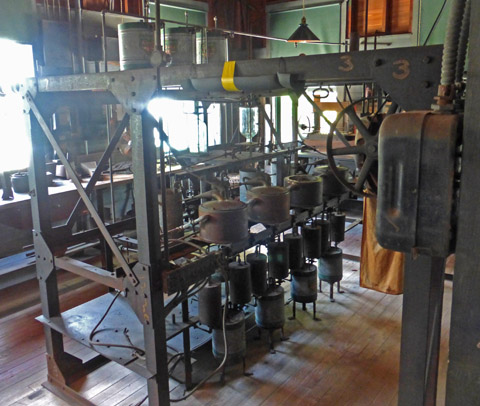

I have no idea what the machine on the left is. The right appears to be a steam engine driving a generator, or maybe
a motor driving an air compressor (or vacuum pump?).
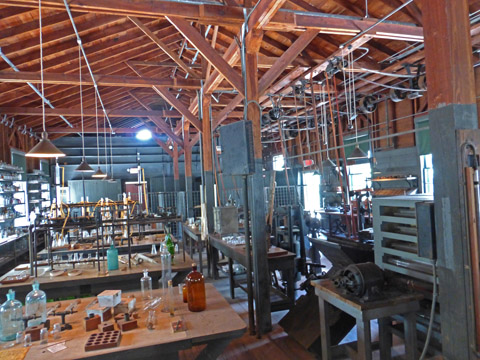
A final view of his lab.
We had flown to FL on May 19, and on the 27th, Fred and Judy
drove
us to the Ft. Myers International airport for our trip home.
We
were both surprised at the size of this airport. It has 3
concourses and many gates. We had Pre-Check boarding
passes
for this direction also, so the security check was easy. We
had an uneventful trip home and even arrived enough ahead of schedule
to catch the shuttle to Prescott an hour earlier than planned.
It was a great trip which we both will remember forever!
A Sad Postlog:
On June 26, 2017 Keith passed quietly into his next life. He will be truly missed by all who knew him! Rest in Peace Keith!
I am so glad that we were able to make our trip when we did. Keith told me numerous times how much it meant to him.
A Sad Postlog:
On June 26, 2017 Keith passed quietly into his next life. He will be truly missed by all who knew him! Rest in Peace Keith!
I am so glad that we were able to make our trip when we did. Keith told me numerous times how much it meant to him.